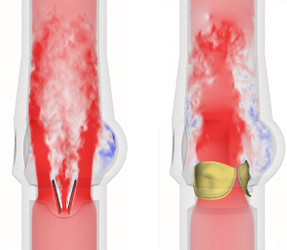Congratulations to Yanni Lai, who successfully completed her oral qualifying exam on multigrid methods for models of cardiac electrophysiology!
Congratulations to Dr. Aaron Barrett!
Congratulations to Aaron Barrett for successfully defending his thesis, An Adaptive Viscoelastic Fluid Solver: Formulation, Verification, and Applications to Fluid-Structure Interaction! Aaron is off to a postdoctoral position at the University of Utah in July.
